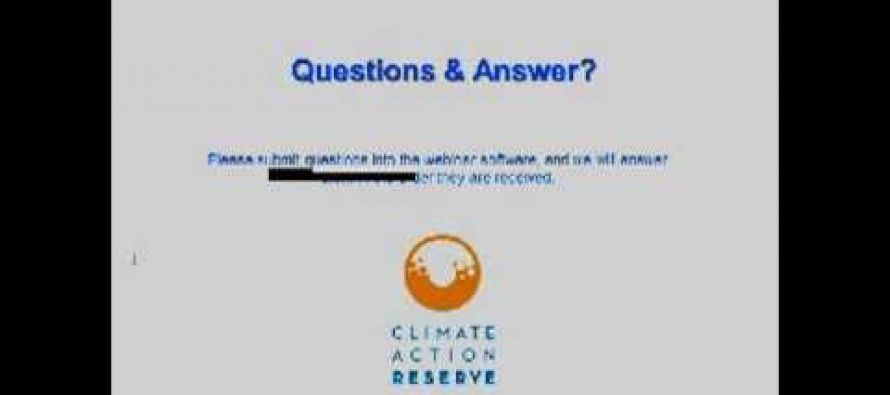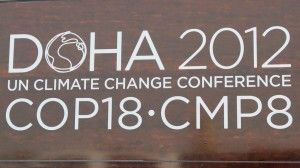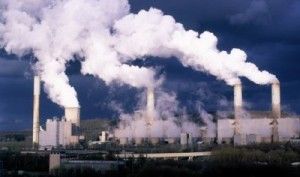Evidence Keeps Building Of Flaws In State’s Carbon Auction

By John Hrabe
California’s cap and trade regulators can’t seem to do anything right. Taxpayers, businesses and even some environmentalists are exposing the serious flaws with the state’s carbon auction.
Small businesses have criticized the landmark greenhouse gas emissions law for being “the greatest threat to the growth of our business in California.” On the eve of the state’s inaugural cap and trade auction, the California Chamber of Commerce filed a lawsuit claiming that the state was illegally profiting from the sale of “free” emission credits. The next day, the auction itself proved to be a major disappointment, yielding less than a dime more than the floor price for carbon allowances.
Of course, the California Air Resources Board promised an open and transparent process. “We’ve erred on the side of making this program transparent and enforceable,” Mary Nichols, chairwoman of the California Air Resources Board, told the San Jose Mercury News in an interview before the auction.
But CalWatchdog’s Katy Grimes has detailed the extensive secrecy pervading the auction. The agency refused “to publish any information about the bidders or the amounts they purchased.”
A new report provides one explanation for the secrecy. “The state disqualified 66 percent of companies’ offers from the auction,” a Bloomberg analysis has found. “After the disqualifications, the state had 1.06 legitimate bids per permit for the 23.1 million permits put up for sale on Nov. 14. Last month the state reported it had 3.1 bids for every permit available.”
The high number of bid disqualifications exposes the inherent flaws in the auction process.
How the carbon auction works
California’s carbon auction isn’t run like a normal auction. There’s no auctioneer progressively recognizing the highest bidder. The bidding process also isn’t managed like a typical online auction, such as eBay. Instead, the state sells carbon allowances in a single-round, sealed bid, uniform-price format.
“This is done by awarding the first allowances to the highest bidder, then the next highest bidder, and so on until all allowances (or bids) are exhausted,” explained Robert Stavins, director of the Harvard Environmental Economics Program. “The bid for the last allowance becomes the price of all allowances sold in the auction.”
The amount of the highest bid is irrelevant. And the identity of the highest bidder is never revealed. All bids remain secret throughout the entire process.
“Nobody can be certain because the market rules prohibit any one particular bidder or qualified bidder from stating whether they submitted a bid or talking to other bidders about bidding or price-fixing or manipulation,” said Timothy O’Connor, attorney and director of California Climate & Energy Initiative at the Environmental Defense Fund (EDF) on a Nov. 28 conference call and webinar on the auction. “So there’s very tight control over the information about who actually submitted bids. And that’s appropriately done to protect the market.”
Uniform-price auctions: under-pricing and incentive to collude
As hard as the state tries to prevent collusion, some experts believe that uniform-price auctions inherently create a self-enforcing strategy of collusion. That was the conclusion of a trio of financial experts in a 1995 report for the Federal Reserve Bank of Atlanta, which evaluated uniform-price auctions and treasury notes.
“In fact, in uniform-price auctions of shares, there exist self-enforcing strategies for bidders that allow them to ‘collude,’” they wrote in “Collusion in Uniform-Price Auctions: Experimental Evidence and Implications for Treasury Auctions,” a September 1995 working paper. “In doing so, they are able to maximize their payoffs at the expense of the auctioneer.”
That means the state isn’t selling the carbon allowances for their true worth, which could explain why the state so badly missed its revenue projections. CARB chief Nichols predicted revenue of “$500 million to $1 billion in the first year.” Yet the auction netted the state’s new Air Pollution Control Fund just $55 million.
“Uniform-price auctions are often criticized because they give rise to underpricing equilibria due to bidders’ market power,” wrote Sylvain Bourjade, a professor of finance at the Toulouse Business School, in “Strategic Price Discounting and Rationing in Uniform Price Auctions.” “Consequently, truthful bidding is not the optimal strategy, and the bidders have an incentive to shade their bids.”
In an effort to earn public approval for the controversial auction, most of the money from the carbon auction goes back to ratepayers, an extremely inefficient and roundabout system. The California Public Utilities Commission recently decreed that 85 percent of the revenue would go to a “climate dividend,” which comes out to $5 per month for most ratepayers.
“The California Public Utilities Commission came out with a plan that will actually pay what they call a ‘climate dividend,’” explained KQED Science Editor Craig Miller. “If there’s an increase in your electric rates as a result of cap and trade and the fees that companies are having to pay, you will get that money back in the form of a couple dividends every year, and might even make some money on the deal.”
Some environmentalists are questioning another accounting gimmick.
Cap and trade: false accounting of greenhouse gas reductions
On Dec. 7, the California Air Resources Board went back to San Francisco Superior Court to combat a lawsuit by the Citizens Climate Lobby, which has challenged the state’s cap and trade program.
“We are challenging the offset regulations approved by the California Air Resources Board because they would allow a false accounting of greenhouse gas reductions, contrary to the letter and spirit of AB 32,” the organization explains in an informational sheet on its website. “A false accounting is worse than doing nothing because it gives people the impression that the climate change problem is being addressed when it is not.”
Mark Reynolds, executive director of the Citizens Climate Lobby, believes that the offsets undermine the potential environmental benefits of AB 32. “These offsets create a huge loophole in the effort to limit greenhouse gas emissions and would allow additional fossil fuels to be burned above the cap or limit provided for in AB 32,” he said in a press release.
Time magazine reports that “greenhouse gas carbon dioxide hit a record high in 2011, and will almost certainly reach a new record of 35.6 billion metric tons in 2012.” A recent journal article published in Nature Climate Change claims that global temperatures will continue to rise and that the serious consequences of climate change are “all but inevitable, no matter what we do in the future.”
Consumers pay higher electricity bills. Small businesses suffer “the greatest threat to growth.” Environmentalists say greenhouse gas reductions aren’t happening fast enough. All of which makes you wonder, “Is anyone benefiting from the state’s carbon auction?”

Green regulators are benefiting, of course.
Not only has CARB received millions of tax dollars to implement AB 32, the additional monies have come with minimal oversight. This year’s 18th U.N. climate change summit, which is attempting to negotiate a replacement for the Kyoto Protocol, is taking place in Doha, Qatar, “the largest per capita emitter of greenhouse gases in the world,” according to Democracy Now’s Amy Goodman. A columnist for the U.K.’s liberal Guardian newspaper described it as home to “some of the most inefficient, profligate, carbon-spewing power generation in the world.”
Related Articles
Scandal ‘boring’? Arrogant Jerry Brown drinks his own Kool-Aid
Feb. 6, 2013 By Chris Reed Sacramento is still buzzing over a bizarre and obnoxious scandal in which state parks
UC Berkeley prof behind invest/spend semantic ploy
AP reporter Judy Lin had a fun story Wednesday about how Democrats are playing the semantic spin game: “SACRAMENTO, Calif.
Delta Hearing Hurries For No Reason
NOV. 18, 2010 By KATY GRIMES The Bay Delta Conservation Plan is on a tight schedule for implementation, but no




